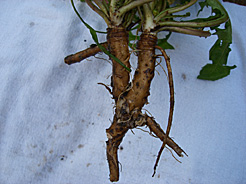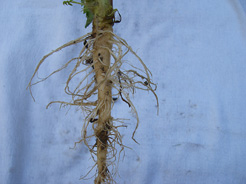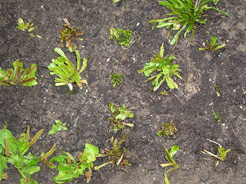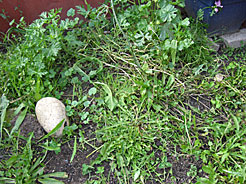Creating Your Own Weed Garden
Creating your own weed garden is a great way of not only increasing your knowledge of plants, but of also providing peace of mind knowing that the weeds you are feeding your tortoises haven’t been sprayed with weed killer or urinated on by every dog in the neighbourhood!
Choose a part of your garden you are happy to give up -- possibly an area which isn’t good enough for bedding plants/shrubs -- as weeds, by nature, will thrive in the poorest of conditions and usually without any tender loving care. The cheapest method of creating your own weed garden is to offer to dig all the weeds out of your family/friends gardens and transfer them to your own. This also gives you the opportunity to be selective about what you grow and where.
If you do decide to transfer weeds, there are a few helpful tips which will give your weed garden a head start. The roots of weeds come in all shapes and sizes and as with any plant, the more of the root you can get, the quicker they will re-root and start to grow. Dandelions (taraxacum officinale), for example, have a very long ‘tap’ root which looks similar to a colourless carrot. When digging up dandelions it is essential to get as much of the tap root as possible: simply snapping the plant at soil level will not be enough. The picture below is a good example of a ‘dug-up’ dandelion and shows how deep you have to dig. Once you have dug it up, remove all the dandelion leaves and flowers, as this will help the roots to become established and the plant will put its energy into the roots rather than trying to sustain the leaves/flowers already growing on the plant.
Dandelion Root

Sowthistle (sonchus asper), however, has a fine network of narrow roots which have a very 'soft' hold of the soil, making them relatively easy to pull up by hand. Hold the sowthistle as close to the ground as possible, with both hands gently start pulling the plant and the whole root stytem usually comes out of the soil still intact. Below is a good example of a sowthistle that has been pulled out of the ground. This weed grows very tall and is great at the back of a weed garden, up against a fence or wall for support.
Sowthistle Root

Alternatively, you can buy ‘weed’ seed from reputable sources which will give you a mix of around 20 – 30 different, safe plants from which your tortoise can graze. There are lots of seed mixes available from garden centres, usually advertised as ‘wild flower mix’ which attract birds and butterflies. These are, unfortunately, unsuitable for a tortoise garden as they always contain some plants which are lethal to tortoises (usually poppies and foxgloves), so sticking to seed mixes specially designed for tortoises is essential.
We would also recommend that you familiarise yourself with edible/poisonous weeds as not all tortoises will reject food that could harm them.
Here are some examples of ‘home-grown’ weed gardens.

Occasionally tortoises that are not 100% healthy, or have been recently acquired, need to be overwintered, which can make feeding difficult as weeds have naturally died off. The above picture shows an old cold frame with a 3ft depth of soil which has been filled with transplanted dandelions. Within 3 weeks they all had new leaves and even flowers! The lid of the cold frame will stop the frost killing them off and will help to sustain a natural diet during the winter.

Alternatively you can grow weeds indoors, but you will need a large pot with plenty of depth if they are to grow and thrive. Pansies and viola flowers will also help vary a natural diet during the winter too.
There are links to weed identification sites on the internet in the Links section of this website, which will help you to identify individual plants and create your own unique tortoise garden.





